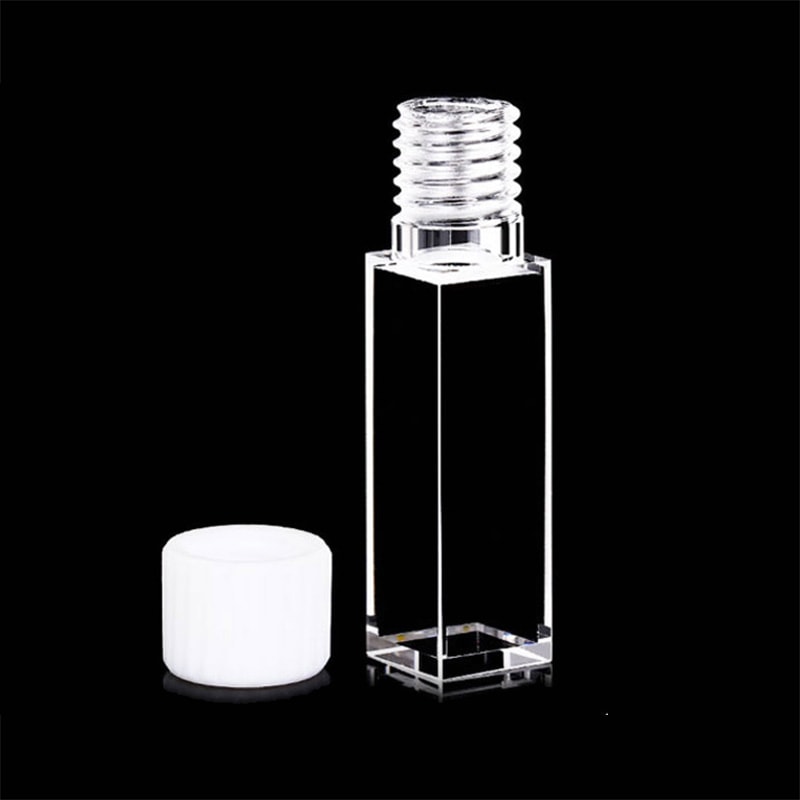Spectrophotometry that reveals the mechanisms behind light transmission and absorption at specific wavelengths, is an essential method for scientific discovery. Cuvettes are the core of spectrophotometry. It is a small yet crucial vessel used to hold samples for analysis. These small containers might seem easy to make, but their intricate details, from cuvette length and material selection are the key to gaining accurate data on the substance’s concentration and purity. Let’s explore this fascinating realm where the dimensions and cuvette size affect the outcome of every experiment.

Image credit: cuvet.co
Power of Cuvette Pathlength
Imagine an light beam moving through a liquid. What happens is dependent on the length of the cuvette or the distance at which the light travels. A standard 1cm path length cuvette is typically used by many labs, balancing between sensitivity and practicality. Why does this matter? The longer the length of the light path more of light that is taken in. Therefore, the signal will be amplified when using dilute samples. In the case of concentrated solutions, such as protein or nucleic acids, a shorter route length can alter the course of play. It can reduce the requirement for dilution, preserving precious samples and cutting down on the preparation time. What’s the lesson to be learned? Achieving the right match between path length and demands for the sample is a delicate technique that increases reliability.
Cuvette Dimensions and Size It’s more Than You Think
Cuvette size isn’t just about how much liquid fits inside it’s about how the vessel interacts with the spectrophotometer. Each container is made to perform the specific job and is available in a range of shapes and sizes. Semi-micro cuvettes have smaller sizes but have more robust walls. They are great for samples with small volumes. Thick walls allow light to traverse the sample and without wasting a single drop. When comparing this to a cuvette standard there is a noticeable difference the reduction in pipetting steps, fewer errors, and the results are durable. This clever trick proves the size isn’t just a number but an approach.
The 1 cm length of the path Cuvette is a lab favorite
Why does the 1 cm path length cuvette rule the day in so many studies? It is ideal for biological tests where samples are limited and milliliters are a lot. This traditional design gives consistent measurements of absorbance that don’t overburden the detector. It’s suitable for everything from DNA purity tests to enzyme tests. It’s not a hero that will work for everyone. Change it out for another cuvette that has a different path length or the same geometry as one used to study emission, and the results could skew widely. Choosing the right instrument is vital, not only using the one you are familiar with. A mismatched cuvette can be compared to a badly tuned instrument.
Material Matters: Beyond Path and Size
Cuvette dimensions only tell half the story. The choice of material seals the deal. Quartz and glass cuvettes are renowned for their excellent rate of light transmission. They’re durable and reuseable. This makes them ideal for spectroscopy. However plastic cuvettes are affordable and ease of use. Utilize them and dispose of them. They don’t require cleaning, no risk of cross contamination. For aqueous solutions and quick DNA and RNA tests they’re tough to beat. The trade-off? low accuracy at certain wavelengths. For those who are a purist, quartz is preferred, while pragmatists may prefer plastic.
Precision in Practice
The appeal of cuvettes lies in their adaptability. The combination of spacers and short path lengths allows for the handling of very concentrated samples and larger vessels are able to take on large quantities. Each choice of path length, size and material ripples through the experiment and affects the clarity of the outcomes. Consider a lab that is testing a protein. A semimicro cuvette offers shorter paths, which reduces the need for dilution and gives reliable results quicker. If you compare that to the unwise cuvette swap in mid-experiment and find the results to be distorted that’s not surprising. It’s a reminder that in spectrophotometry the tiny details have the greatest impact.
Cuvettes might be small, however their purpose is significant. From the 1 cm path length cuvette, to custom-designed dimensions, these vessels are able to bridge the gap between sample and understanding. A cuvette that is right for you can transform a great measurement, whether you are chasing purity or concentration and precision, into a fantastic measurement.

